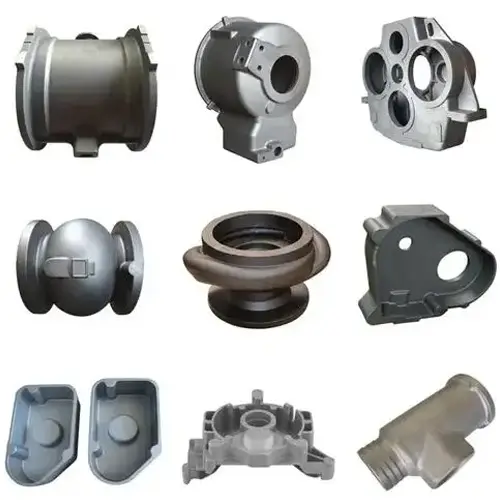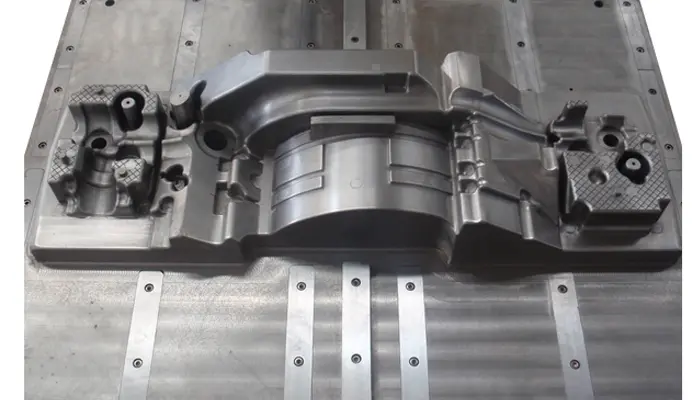Low-temperature high-impact ductile iron needs to maintain high impact toughness at low temperatures of -40℃ or even -50℃. As a material with special performance requirements, it has been widely used in wind power, high-speed rail and other fields. With the rapid economy development , the demand for low-temperature high-impact ductile iron parts is also growing.
In order to ensure that the final organization and mechanical properties of the castings meet the requirements of low-temperature high-impact ductile iron, the production difficulties are mainly reflected in the selection and control of chemical composition, smelting process, spheroidization treatment, inoculation treatment and possible heat treatment.
1: Chemical composition of base iron
Carbon content 3.5~3.8%: affects the spheroidization effect and the number and size of graphite balls, and has little effect on impact properties.
Silicon content 1.9~2.2%: promotes ferrite formation, reduces impact properties at low temperatures, and must be controlled within a certain range.
Manganese content <0.1%: helps to improve strength, but excessive amounts will reduce toughness, so the amount must be strictly controlled.
Phosphorus and sulfur content <0.025%: should be reduced as much as possible because they will reduce the toughness and strength of the casting. This negative impact is more obvious in low temperature environments.
In addition to the control of the composition of the molten iron, it is also key to control the formation of carbides when producing this grade of cast iron in the cast state, because carbides can affect the impact toughness and other mechanical properties of the material. Carbide-promoting elements mainly include chromium, molybdenum, tungsten and vanadium. These elements can form carbides in cast iron, thereby increasing hardness and strength, but excessive amounts will reduce impact toughness.
2. Charges and smelting
2.1 Charges
Carefully select the charge to avoid promoting the formation of pearlite, carbides and segregation elements. The charge ratio is approximately recycled charge (30-50%), high-quality scrap steel (25-30%) and high-purity pig iron (25-30%).
2.2 Power supply melting
Use high current for rapid melting, always pay attention to the fall of the charge, avoid the shed material and cause local overheating of the molten iron, resulting in the disappearance of the heterogeneous core and affecting the spheroidization effect.
2.3 Sampling analysis and adjustment
Sampling analysis is carried out when the molten iron is heated to about 1450℃, and the chemical composition is determined to meet the requirements by using a thermal analyzer and a spectrometer.
2.4 Molten iron out of the furnace
High current is supplied, and the temperature is quickly raised to the furnace discharge temperature. The slag on the surface of the molten iron is scraped off and then the molten iron is discharged to ensure the number of graphite balls and the purification effect of the molten iron after the spheroidization reaction.
3. Spheroidization treatment
3.1 Types of spheroidizers
Select spheroidizers with good stability, such as special low-magnesium and low-rare earth spheroidizers, to reduce the negative impact on the low-temperature impact value.
3.2 Spheroidizer particle size and addition amount
The particle size of the spheroidizer is controlled within a certain range (3~20mm), and the addition amount is adjusted according to factors such as the composition of the molten iron and the furnace discharge temperature.
3.3 Spheroidization ladle requirements
The bottom of the spheroidization ladle is repaired into a pit-type, and the size and depth of the pit should be appropriate to ensure the smooth progress of the spheroidization reaction.
3.4 Method of adding spheroidizer and tapping
The spheroidizer is added to the pit at the bottom of the ladle and leveled, and then covered with the inoculant and then with a thin steel sheet. Do not directly hit the spheroidizer when tapping to ensure the spheroidizing effect.
4.Inoculation treatment
4.1 Selection of inoculant
Select appropriate inoculant and addition amount for inoculation treatment to increase the graphite nucleation ability, refine the grains, increase the number of graphite balls and ferrite content.
4.2 Number and timing of inoculation: Perform multiple inoculation treatments, especially using the stream inoculation technology during the casting process to improve the inoculation effect.
The type of inoculant affects the cooling rate of cast iron and the formation of graphite balls. Inoculation treatment temperature affects the inoculation effect and casting performance.
Through experiments, we found that the quality of molten iron can be improved from the aspects of pretreatment, pre-inoculation, inoculation, and stream inoculation, and the best solution for inoculation process and spheroidization number can be found.
5. Heat treatment
Low-temperature annealing is used to eliminate internal stress and improve the uniformity of the structure, thereby improving the low-temperature impact toughness.
In summary, the production characteristics of low-temperature high-impact ductile iron are mainly reflected in the selection and control of chemical composition, smelting process, spheroidizing treatment, inoculation treatment and heat treatment. These production characteristics jointly ensure that low-temperature high-impact ductile iron has excellent low-temperature toughness and high strength and other performance characteristics.




